

Patients with Disabilities: An Unmet Need
Physicians may be technically ADA-compliant, but that doesn’t mean they are meeting the needs of their patients with disabilities.
Fight
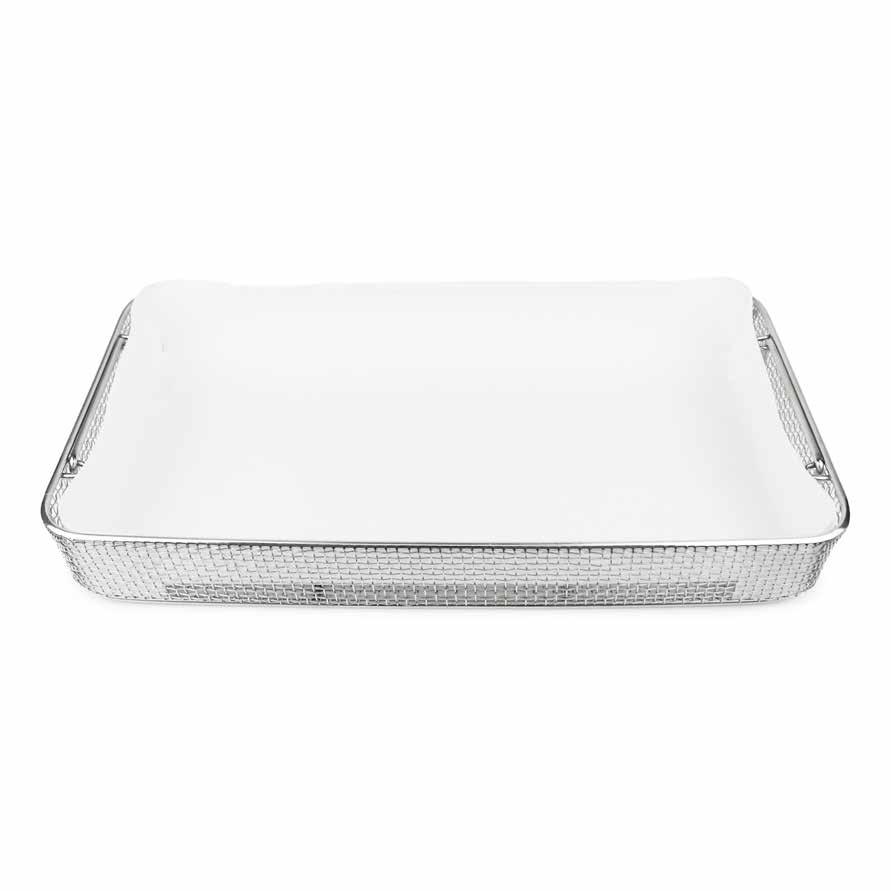
Available in several sizes and styles, Healthmark’s UnderGuardTM Tray Liners can be safely used next to delicate instruments during sterilization
Safe to use during sterilization to absorb and rapidly disperse condensate, which greatly facilitates the production of dry packs.
Produced from pure cellulose wood pulp, manufactured with low chloride & sulfate content and free from optical dyes.
Form-Fitting Liners are die-cut so that they form a protective barrier from the bottom and sides of instrument baskets.
hmark.com | 800.521.6224 | healthmark@hmark.com For more wet pack solutions, including UnderGuardTM for VH202 & UnderGuardTM for Autoclave Shelves, visit
hmark.com
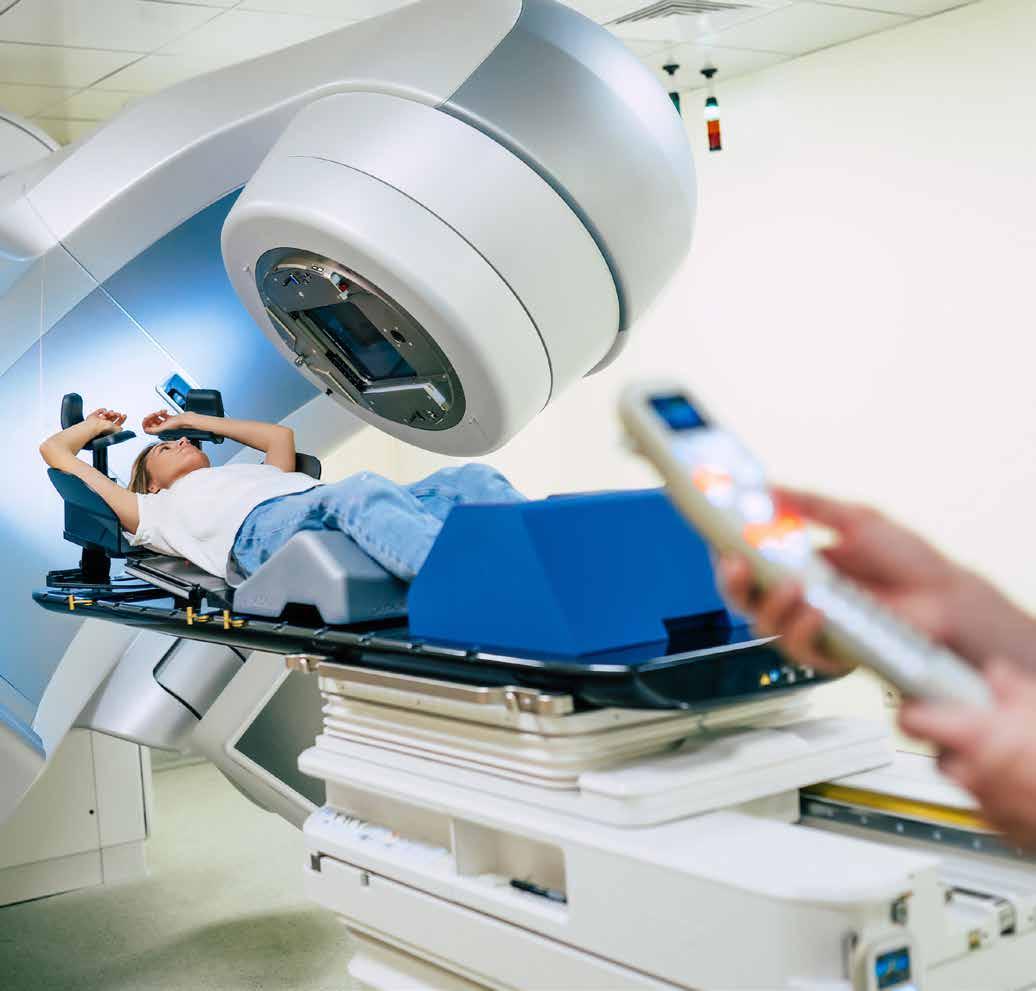
The Journal of Healthcare Contracting is published bi-monthly by Share Moving Media
350 Town Center Ave, Ste. 201 Suwanee, GA 30024
Phone: 770/263-5262 FAX: 770/236-8023 e-mail: info@jhconline.com www.jhconline.com
PUBLISHER John Pritchard jpritchard@sharemovingmedia.com
DIRECTOR OF BUSINESS DEVELOPMENT Anna McCormick amccormick@sharemovingmedia.com
2 Home Health Hazards
ECRI’s recent Top 10 Health Technology Hazards list includes home medical device safety issues that the industry must address.
8 How Healthcare Providers are Shifting to Home Care
What adjustments do supply chain teams need to make as more care is moving outside the traditional care setting?
17 Patients with Disabilities: An Unmet Need
Physicians may be technically ADA-compliant, but that doesn’t mean they are meeting the needs of their patients with disabilities.
24 U.S. Cancer Statistics Released Cancer rates are on the rise in younger adults. 36 By
38 Forming Partnerships and Driving Value
Supply chain leaders discuss keys to successful industry partnerships, challenges in 2024 and beyond.
EDITOR Graham Garrison ggarrison@sharemovingmedia.com
SENIOR EDITOR Daniel Beaird dbeaird@sharemovingmedia.com
ART DIRECTOR Brent Cashman bcashman@sharemovingmedia.com
CIRCULATION Laura Gantert lgantert@sharemovingmedia.com
The Journal of Healthcare Contracting (ISSN 1548-4165) is published bi-monthly by Share Moving Media, 350 Town Center Ave, Ste 201, Suwanee, GA 30024.
Copyright 2024 by Share Moving Media All rights reserved.
Please note: The acceptance of advertising or products mentioned by contributing authors does not constitute endorsement by the publisher. Publisher cannot accept responsibility for the correctness of an opinion expressed by contributing authors.
Home Health Hazards
ECRI’s recent Top 10 Health Technology Hazards list includes home medical device safety issues that the industry must address.
“Severe harm can result from the misuse or malfunction of medical devices in the home,” said Marcus Schabacker, MD, PhD, president and CEO of ECRI. “Patients and caregivers who misinterpret device readings may feel a false sense of security. Errors may go undetected or unreported, making it difficult to identify problematic trends.”
Considering the changes to healthcare brought on by the pandemic, many patients have been choosing to receive care within the comfort of their own homes instead of the hospital; a transition which has been made possible largely due to the switch to virtual care and innovation within athome medical technology. However, most medical devices are still designed to be used by a medical professional in a hospital or clinical setting, requiring patients, more often, to seek in-person healthcare.
At-home patient care is a developing concept, and it does not come without risks for patients. According to a report from ECRI, one of the most pressing health technology safety concerns in 2024 are for patients and caregivers using medical devices at home. The ECRI Top 10 Health Technology Hazards list identifies the most critical healthcare technology issues annually. The list supports health systems, hospitals, ambulatory surgery centers (ASCs), and distributors in mitigating potential industry risks. This year’s list includes home medical device safety issues, along with insufficient cleaning of medical devices, environmental harm from care, AI in healthcare, and more.
ECRI’s research report shows that more people are now receiving medical care at home due to the rise in the nation’s population and the number of patients living
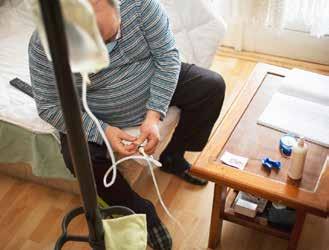
with chronic conditions increasing. As a result, medical devices such as infusion pumps and ventilators are being used at home more often. In some cases, patients and caregivers have not been properly trained on how exactly to use certain medical devices. Lack of proper medical device training is dangerous, as devices can lead to patient harm if used improperly.
The report found that there have been numerous examples of patient injury resulting from home-use devices. Medication errors can occur from changing infusion pumps, skin injuries can occur when cardiac monitor electrodes are applied incorrectly, and fatalities can occur if home ventilator alarms go unheard by caregivers, or needles from hemodialysis machines dislodge, according to ECRI researchers. Many medical devices are designed to be used in a controlled environment by healthcare professionals and are too complex for people to safely maintain at home. When medical devices are in the design stages, manufacturers consider the usability for the end user foremost. As patients increasingly receive care in their homes, ECRI researchers state that modern care settings should influence the design of medical devices going forward.
In ranked order, ECRI’s Top 10 Health Technology Hazards for 2024 are:
1. Usability challenges with medical devices in the home
2. Insufficient cleaning instructions for medical devices
3. Drug compounding without technology safeguards
4. Environmental harm from patient care
5. Insufficient governance of AI in medical technologies
6. Ransomware as a critical threat to the healthcare sector
7. Burns from single-foil electrosurgical electrodes
8. Damaged infusion pumps risk medication errors
9. Defects in implantable orthopedic products
10. Web analytics software and the misuse of patient data


A distribution perspective on advocating for clinical laboratories amid transformation

To advocate for the value of distribution in the healthcare ecosystem, the Health Industry Distributors Association (HIDA) regularly meets and holds annual conferences to bring industry leaders from across the spectrum of healthcare together to share, learn and plan for the future.

“The unique needs of the laboratory industry are brought to the forefront of the conversation along with other key elements of the healthcare supply chain,” said HIDA Board Member Emily Berlin, Vice President Laboratory Marketing & Aero-Med Commercial Sales and Operations, Cardinal Health.
As one of the largest healthcare distributors in the United States, Cardinal Health™ has decades of experience helping lab customers improve their supply chain resiliency and operate more
efficiently through a dedication to deliver quality products, value-adding services and reliable supply chain solutions.
“While those of us that are entrenched within distribution understand the fundamental role that distributors play to both large health systems as well as small independent practices, it wasn’t until the pandemic that the true importance of distribution was more broadly understood,” Berlin said.
While the effects of the pandemic have been mitigated to an extent, the major factors impacting clinical laboratories remain consistent: a continuing workforce shortage, decreasing reimbursements, ongoing regulatory legislation and industry consolidation, to name a few. At the same time, diagnostic innovation evolves swiftly, driven by the needs of an aging population, high rates of chronic disease, rapid technological advancements and a greater demand for personalized medicine. The question on the minds of industry leaders remains: How can we best support our lab customers in their pursuit of quality testing amid transformation and constraints?
Understanding the
regulatory
landscape
At annual industry association conferences like the HIDA Executive Conference, topics of discussion often center on ongoing and upcoming federal regulations, how these regulations may impact labs and how organizations can best advocate
Choose the Cardinal Health™ Brand advantage
Most facilities can save up to 10% when conver ting from National Brand products to Cardinal Health™ Brand Laborator y Products.1
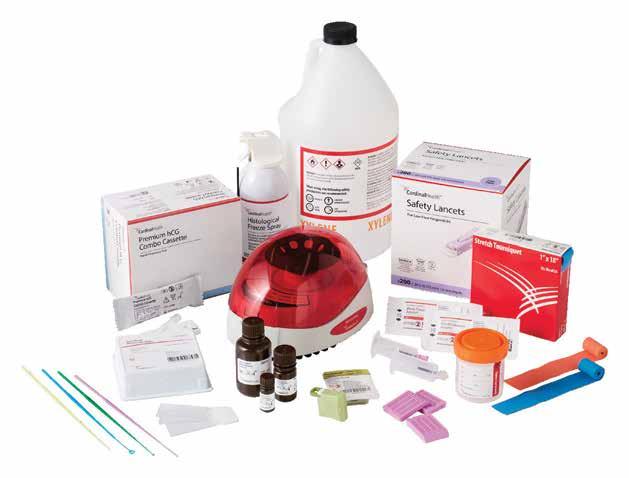
With the volume of supplies and equipment it takes to keep a lab running, choosing products that help you save, standardize and suppor t supply chain resiliency can be a big boost to laborator y per formance.
Cardinal Health™ Brand Laborator y Products are designed to meet testing needs across ever y lab discipline and are backed by our unmatched nationwide distribution network.
for their lab customers. Current legislation being discussed includes:
` The FAST PASS Bill, introduced to expedite the medical supply chain during emergencies
` The Saving Access to Laboratory Services Act (SALSA), meant to update data reporting requirements and payment methodology under the Protecting Access to Medicare Act (PAMA)
` FDA proposal to increase oversight by reclassifying Laboratory Developed Tests (LDTs)
“It is our goal to understand what these regulatory impacts are going to look like, and if— and how — we can help shape them as advocates for our customers,” Berlin stated.
Labs across the country are still burdened by the shortage of qualified professionals due to lack of qualified applicants, reduction of medical technology programs, decreased visibility of the field and increasing retirement rates. With pending regulation potentially compounding these shortages, labs are looking to their distributors for proactive solutions that can help ease their burden by enabling them to do more with potentially limited resources.
The impact of innovative diagnostic and treatment techniques
The essential diagnostic information generated in the lab is critical to enabling precision medicine and personalized treatment. The capabilities of molecular diagnostics, CRISPR, AI and machine learning, and other disruptive technologies continue to evolve, representing potential for earlier

detection, more effective disease management and even new cures. For example, the FDA recently approved a gene editing tool for a therapy that can cure sickle cell anemia using CRISPR to edit the DNA found in patient’s own stem cells.1
Additionally, lower-cost, more portable point of care (POC) testing methods are in development to speed up testing, help control disease spread and enable care accessibility for people who have difficulty accessing in-person treatment centers. With testing becoming more decentralized, it will be critical for POC testing to continue advancing to support public health and patient care.
Driving value for Cardinal Health lab customers
Through its distribution offering, Cardinal Health plays a role in shaping healthcare delivery and its evolution. To support customers in this changing landscape, the organization continues to invest in new distribution capabilities, including expanded capacity, new distribution centers and innovative robotics to optimize supply chain efficiency.
Cardinal Health also invests in innovative solutions to help customers meet changing demands, including a custom kitting solution designed to help healthcare facilities streamline operations, reduce errors and improve the patient experience. It enables Cardinal Health to support customers during each stage of the process, from inception to delivery, by creating custom specimen collection kits tailored to a facility’s unique requirements. Collection kits can also be built with Cardinal Health™ Brand Laboratory Products that deliver additional savings to customers.
Though industry summits like HIDA are opportunities to look ahead, supporting and advocating for the laboratory is an everyday responsibility. Cardinal Health is intensely focused on helping lab customers work more efficiently, driving value across workflows, promoting supply chain resiliency and supporting quality testing for the best possible patient experience.
“I get energized by thinking about the important role that testing plays in a patient’s healthcare journey, how our healthcare ecosystem is evolving and how Cardinal Health can support and collaborate with our lab customers as they evolve as well.” Berlin said.
References: 1 FDA approves first gene therapies to treat patients with sickle cell disease. U.S. Food and Drug Administration. Published December 8, 2023. Accessed March 13, 2024. www.fda.gov/news-events/press-announcements/fda-approves-first-gene-therapies-treat-patients-sickle-cell-disease

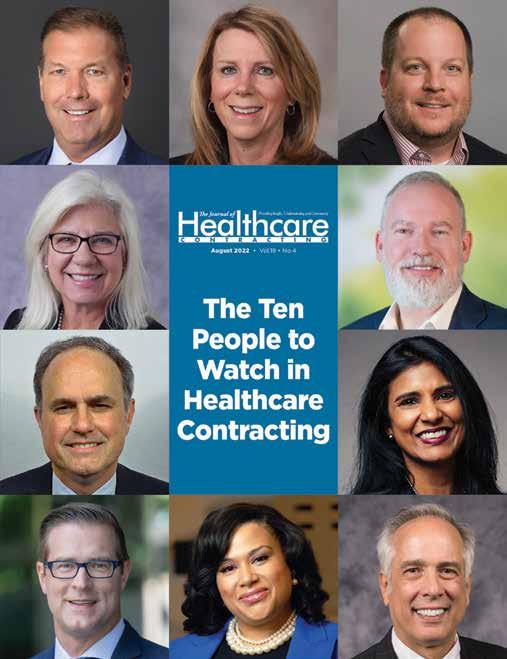

 — Mark Welch, Senior Vice President, Novant Health
— Mark Welch, Senior Vice President, Novant Health
How Healthcare Providers are Shifting to Home Care
What adjustments do supply chain teams need to make as more care is moving outside the traditional care setting?

McKinsey & Co. estimates that up to $265 billion worth of care services, representing up to 25% of the total cost of care, for Medicare fee-for-service (FFS) and Medicare Advantage (MA) beneficiaries could shift from traditional facilities to the home by 2025 without a reduction in quality or access. That represents a three- to fourfold increase in the cost of care being delivered at home today for this population. John Pritchard, publisher of The Journal of Healthcare Contracting, discussed the shift to home care with healthcare supply chain industry leaders in a webinar sponsored by Hollister Incorporated.
The webinar participants included:

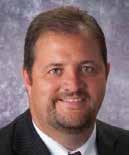
George Godfrey, Chief Supply Chain Officer and Corporate Vice President, Financial Shared Services, Baptist Health South Florida
Tim Nedley, Vice President, Supply Chain Management Operations, UPMC

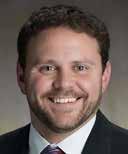
Charlotte Luey, Senior Manager, Ambulatory Strategic Sourcing, Providence St. Joseph Health
Adam Smerecki, System Director HME, The University of Kansas Health System
John Pritchard: Patients are transitioning from acute care or an ambulatory setting to their home. What does supply chain have to be concerned about in order to take care of those patients throughout all settings?
Tim Nedley: We’re seeing 700,000 home care patients per year at UPMC. From a supply chain perspective, it’s all about preventing patient leakage from the system. We’re doing things like filling their first prescription while they’re still at the hospital. For example, when U.S. veterans leave the hospital on average there’s a seven- to 10-day lapse in them being able to get their pharmaceuticals. That’s been our experience in northern Pennsylvania. So, we’re trying to fill their first prescription at our hospitals. It’s all about following that footprint. Do we need visiting nurses to see them? Do they need their medical supplies shipped to their home?
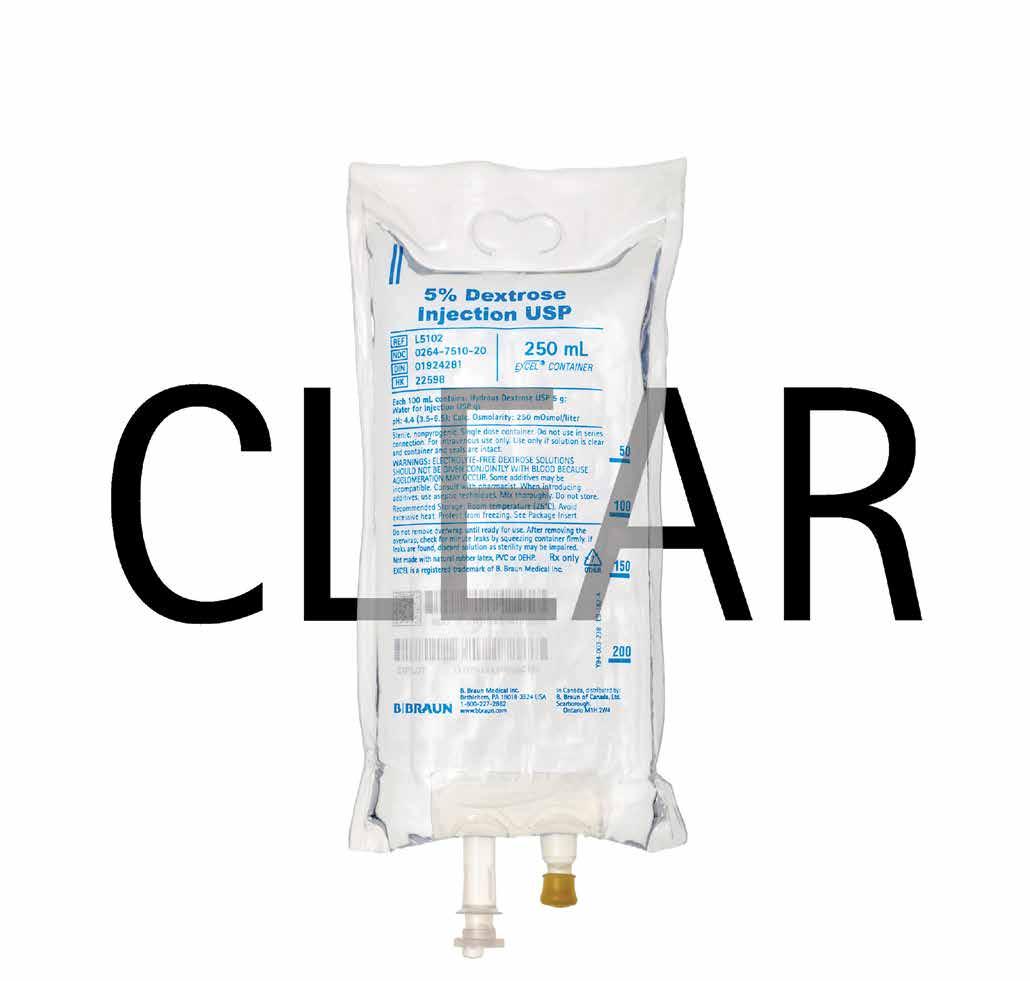

George Godfrey: Hospital to home is a large topic. Anything that can be done to reduce patient stay and get them home takes pressure off of the hospital and gets the patient, if they’re healthy enough, into a comfortable home environment sooner. That’s expanded services from home infusion to deliveries of medical supplies. We’re at the beginning of that life cycle at Baptist Health South Florida. It started on the pharmaceutical side and is beginning to expand to general medical supplies.
unique needs of those patients. They might have prescribed products that aren’t Providence standards or Providence contracted products.
Adam Smerecki: Being a part of the continuity of care is important when it comes to patient leakage from the system. We must think about it from an all-medical equipment perspective and from the discharge process. Patients have a choice of the companies they would like to use on their way home. Being a part of
There are certain categories of product that drive volume and spend like incontinence and wound care in the ambulatory space and home community care space. It’s all about pulling caregivers into our nursing councils to make sure they are helping make those decisions.
Charlotte Luey: From a supply chain perspective, Providence St. Joseph Health shifted its focus three years ago from the acute space to ambulatory trying to drive down the cost of care and length of stay for patients, shifting to preventive care or at home care. We’ve focused on alignment and driving standards because Providence is such a large organization. Initially, we had a lot of variation, but we’ve been more successful in our physician enterprise group and some more immediate care areas.
There are some unique patient needs in the home community care space. That’s made it more difficult to drive some of those standards but removing variation where we can has been a big focus for us. We have formularies in place, and we drive standardization to our committed suppliers. We have to be aware of the
the discharge process is one of the things that will help – providing education to the patient about which companies are associated with the health system’s complete care or the hospitalist who’s worked with them through their care. Our HME at The University of Kansas Health System has deliberate access to the patient’s electronic medical record and that’s important because some of the companies outsourced don’t have that access.
We also focus on readmission rates from an HME perspective. When a patient goes home and they are under our care, we work with them and stay in touch with their physicians to keep readmission rates down. We look at our services like a vendor, even though we’re part of the hospital.
Also, during the discharge process, we have the ability to work with underinsured,
uninsured or charity care patients. Other companies in the area don’t have the ability to work through charity care. Transportation, logistics and everything else is involved in that.
Pritchard: How important is it to maintain positive income after transitioning a patient to another care setting or to their home?
Smerecki: Those decisions need to be made responsibly. Looking at our fee schedules and our reductions, we must look at it from the perspective of how we are supplying the service and other creative ways to continue to bill for the services we provide. Many patients may need to go back to the hospital for a procedure and there are pieces of equipment that can be billed or a procedure code that would put us over the top from a positive income perspective.
We have to look at drop shipping as opposed to making home deliveries like in the old days. It’s different now utilizing telemedicine and drop shipping to ensure we have a positive bottom line. But if we don’t think a patient will be able to function with a drop ship or telemedicine, we have to make that adjustment. Looking at a patient as a whole makes a lot of sense.
Luey: We’ve been focused on distribution fees and shipping costs. That’s a hot topic. Product variation weighs into that because if can align to our contracted preferred suppliers, then we can get them that best-in-class pricing that we’ve been able to negotiate, while still being considerate of some unique patient needs. There are certain categories of product that drive volume and spend like incontinence and wound care in the ambulatory space and home community care space. It’s all
The



The stakes have changed. It’s time to raise the bar.
In this post-pandemic world, uncertainty is the new normal. Being resilient and ever-ready have moved from aspirational to table stakes. And now — more than ever — you need a reliable partner to support you and your patients every step of the way. That’s why we’re redefining supply chain expectations.
In this post-pandemic world, uncertainty is the new normal. Being resilient and ever-ready have moved from aspirational to table stakes. And now — more than ever — you need a reliable partner to support you and your patients every step of the way. That’s why we’re redefining supply chain expectations.
From physician offices to surgery centers and patients’ homes, we tailor our breadth of offerings to create a unique roadmap that helps you build a resilient, high-performing supply chain.
From physician offices to surgery centers and patients’ homes, we tailor our breadth of offerings to create a unique roadmap that helps you build a resilient, high-performing supply chain.

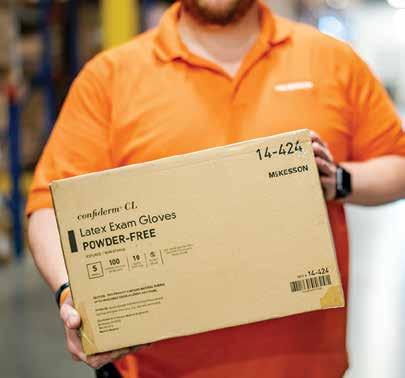

Redefining partnerships
Redefining partnerships
We’re relentless about building trusted partnerships that make supply chain excellence and better health possible.
We’re relentless about building trusted partnerships that make supply chain excellence and better health possible.
Redefining patient-focused solutions
Redefining patient-focused solutions
We build customized solutions to help you improve operational, financial and clinical outcomes — efficiently, effectively and on budget — so you can deliver better patient care.
We build customized solutions to help you improve operational, financial and clinical outcomes — efficiently, effectively and on budget — so you can deliver better patient care.
Supply Chain Expectations, so you can deliver care – anywhere.
Raising Supply Chain Expectations, so you can deliver care – anywhere.
Redefining world-class distribution
Redefining world-class distribution
We’re ready for the future — today. From global distribution to logistics services, we help you improve operational efficiencies across hundreds of micro supply chains, so you’re ready to take on any challenge.
We’re ready for the future — today. From global distribution to logistics services, we help you improve operational efficiencies across hundreds of micro supply chains, so you’re ready to take on any challenge.
about pulling caregivers into our nursing councils to make sure they are helping make those decisions.
Godfrey: The focus is always on the best outcomes for patients and then we’ll find the best return. The challenge at home is the standardization process. Who’s deciding what’s in and what’s out? What’s the profitability of that mix? Our hospitals are very seasoned in profit and loss responsibilities in that setting, but having that at home is new to us. Every health system is set up for thousands of transactions with the need to automate those in a cost-effective way. It’s very important.
But at home goes against that. It goes to customization by patient. It’s not a standard pick list to a medical supply cabinet in a nurse’s station. Each patient becomes customized from a supply chain standpoint. It starts to challenge the infrastructure set up to support ongoing business. So, what can be leveraged with existing technology? Electronic medical records are an advantage, and a pharmacy link is an advantage in delivery methodologies.
Nedley: Think about the quality of care. It’s our job to meet patients in the place they are most comfortable in receiving care. For many, that’s in their home. They don’t have the ability or desire to go into the city to one of our hospitals. If we can care for them at home, hopefully we’re positively impacting their care and potentially driving down readmissions. Reduced funds come with readmissions.
We have visiting nurses going to a patient’s home and we’re trying to tee up shipments to get there by a certain time of the day, so that’s a premium freight. We’re big on telemedicine and we have

a joint venture with a DME company that we own. It’s everything from oxygen concentrator to DME and hospice beds. We have many avenues for getting those products there.
Pritchard: How are you supplying home healthcare settings? Who is your distributor partner and how is product getting there?
Nedley: It’s a combination of non-acute care distributor and our joint venture. We ship the visiting nurse’s trunk stock. There are normal supplies they need and there are other things that go directly to our patients.
Godfrey: We rely on the distributor more than anything else right now, but we’re getting ready to test on the medical side ourselves to see the complexities of delivery. Does the patient need to be home to sign for the goods? What training is necessary to employ? What kind of skillset does the delivery person need? How do we keep products stored and transported properly? All of those things.
Luey: We have patient home direct distributors we work with. We manage it
differently within our different pillars. Our infusion pharmacy group is dialed in to one order per month per patient, but their scope of products is unique. They have nutritional products they might be delivering, and they’ve developed a schedule that might not be as easily managed in other areas like hospice or skilled nursing.
The patient home direct space is the one we’re most focused on right now. We’re trying to find innovative ways to drive down costs but also make sure patient needs are being addressed.
Smerecki: We can have a bed shipped to a patient’s home, but we need technicians and nurses at the home to set up the bed and teach the patient or there won’t be payment from Medicare for that. The customization of each patient is how we look at it. For hospice, we know we’ll be at that home several times and we’re not going to direct ship anything unless it’s a larger product. But we know a hospice patient will be more expensive from a cost of services perspective. Each service line under HME needs to be looked at from a cost of services perspective.
To listen to the full discussion, visit jhconline.com/podcasts
THE VALUE OF OUR PORTFOLIO 1
In Plastic Surgery and Regenerative Medicine

Versatile Stocking Supplier Resiliency Dependable Delivery

Healthcare systems value the role of supply chain more than ever, and working with a dependable supplier is critical to success. Allergan Aesthetics continues to deliver the dependability and value that you expect from an industry leader.
Less is more with the PURELL® ES10 Touch-Free Dispenser
It’s the simplest, most sustainable touch-free dispensing system ever introduced by GOJO
PURELL®, America’s No. 1 brand in hospitals, introduces the PURELL® ES10
Touch-Free Dispenser. The touch-free hand hygiene dispenser is exceptionally quiet when dispensing premium, high-quality foam in a consistent, efficacious dose. Plus, its slim design fits in tight spaces.
Less is more
Less is more with the PURELL® ES10
Touch-Free Dispenser. Through its groundbreaking technology, it offers:
ʯ Less maintenance with easy-to-check product levels and no batteries to change
ʯ Less waste with 30% less plastic per refill and simplified recycling
ʯ More smart solutions to help customize hand hygiene plans through flexible data collection options
ʯ More ways to impress with consistent dispensing and modern finishes
The PURELL® ES10 Touch-Free Dispenser offers a quick and efficient solution in high-use healthcare spaces and less maintenance promotes health and safety.
Easy refills without changing batteries
Patented Energy-on-the-Refill technology allows users to never change or buy
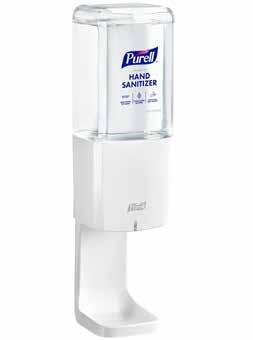
batteries and an AA battery included on every refill eliminates battery expense and inventory. Transparent refills take less time and labor than cabinets or small sight windows and help users check multiple dispensers at once. Refills are easy to match and drop into place, and a simple locking option helps prevent tampering.
Suite of technologies and services
Downtime and workflow disruptions are reduced through smart and simple management capabilities. For example, users can customize hand hygiene plans, save time and improve outcomes with the PURELL SMARTLINK Hand Hygiene System. This comprehensive set of tools also includes on-going clinical guidance, to help facilities make sense of the data throughout the life of your customers’ SMARTLINK service.
From the complimentary DISPENSER ADVISOR app that helps identify usage patterns in smaller facilities or more remote dispenser locations, to PURELL SMARTLINK Service Alerts, which provides real-time alerts 24/7 on refills and dispenser maintenance needs across a fleet of dispensers – only PURELL offers the right technology options to ensure product is ready whenever its needed.
Sustainable practices
The PURELL® ES10 Touch-Free Dispenser also reduces product waste and helps protect the earth. The refill bottle and plastic components are easy to recycle, and the collar and alkaline AA batteries are easy to pull apart. The dispenser’s Cradle to Cradle Certified™ soap and sanitizer formulas validate that safe ingredients are chosen and prioritize sustainable practices. There is 30% less plastic per refill and 38% lower greenhouse gas emissions.
Sleek, modern designs for healthcare facilities
The PURELL® ES10 Touch-Free Dispenser offers modern finishes, including graphite, white and chrome. It fits in tight spaces and is ADA compliant for wall protrusion. It is exceptionally quiet when dispensing the perfect amount of gentle foam, ensuring healthcare workers get an efficacious dose every time while soothing hands, even with frequent use.
Whether its patient rooms, study halls or high-traffic areas, the PURELL® ES10 Touch-Free Dispenser fits in all critical spaces. Its lineup includes the PURELL® ES10 Floor Stand, PURELL® ES10 Hand Sanitizer Dispenser and PURELL® ES10 Hand Soap Dispenser.
Trusted & Trustworthy
Trusted & Trustworthy
Trusted & Trustworthy
Trusted & Trustworthy
Trusted & Trustworthy
Trusted & Trustworthy
It’s true. The PURELL® brand is trusted and preferred by healthcare workers.
It’s true. The PURELL® brand is trusted and preferred by healthcare workers.
It’s true. The PURELL® brand is trusted and preferred by healthcare workers.
But more importantly, we work tirelessly to earn that trust.
It’s true. The PURELL® brand is trusted and preferred by healthcare workers.
But more importantly, we work tirelessly to earn that trust.
But more importantly, we work tirelessly to earn that trust.
But more importantly, we work tirelessly to earn that trust.
It’s true. The PURELL® brand is trusted and preferred by healthcare workers.
Our hand hygiene is gentle on hands, even with frequent use. And our powerful surface products can even be used near patients and on electronics.
Our hand hygiene is gentle on hands, even with frequent use. And our powerful surface products can even be used near patients and on electronics.
It’s true. The PURELL® brand is trusted and preferred by healthcare workers.
Our hand hygiene is gentle on hands, even with frequent use. And our powerful surface products can even be used near patients and on electronics.
But more importantly, we work tirelessly to earn that trust.
The Difference Is Clear.
The Difference Is Clear.
Our hand hygiene is gentle on hands, even with frequent use. And our powerful surface products can even be used near patients and on electronics.
But more importantly, we work tirelessly to earn that trust.
The Difference Is Clear.
Our hand hygiene is gentle on hands, even with frequent use. And our powerful surface products can even be used near patients and on electronics.
The Difference Is Clear.
Our hand hygiene is gentle on hands, even with frequent use. And our powerful surface products can even be used near patients and on electronics.
The Difference Is Clear.
The Difference Is Clear.
Contact your distributor or GOJO representative today.
Contact your distributor or GOJO representative today.
Contact your distributor or GOJO representative today.
Contact your distributor or GOJO representative today.
Contact your distributor or GOJO representative today.
Contact your distributor or GOJO representative today.
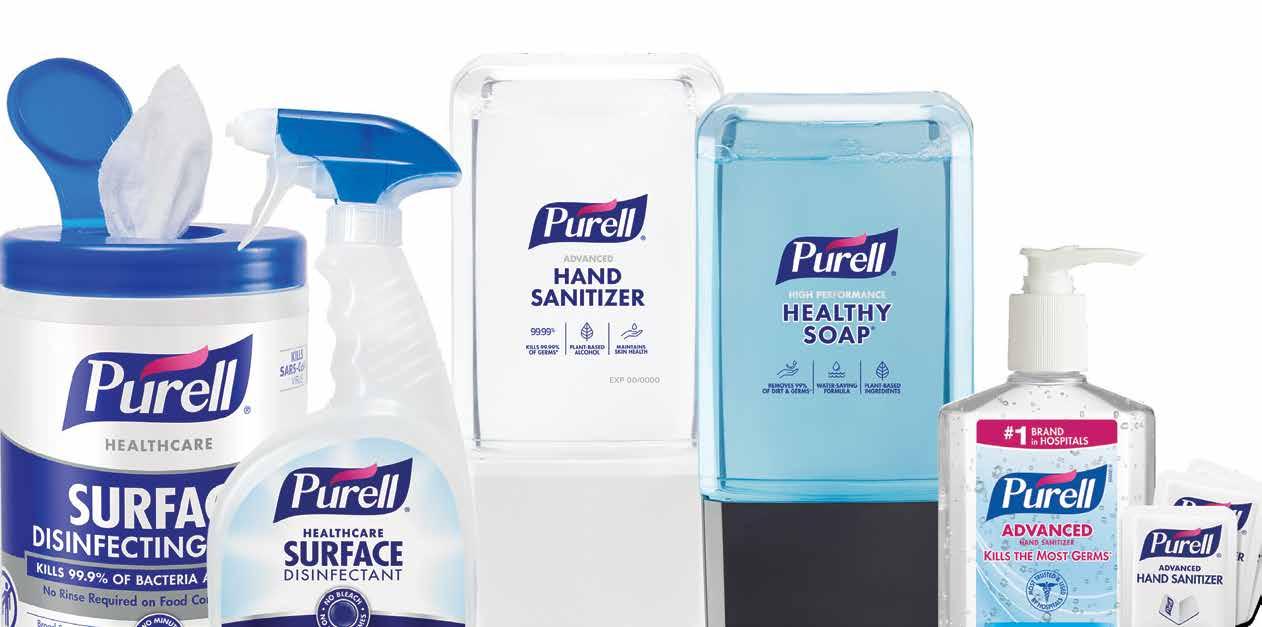


Patients with Disabilities: An Unmet Need
Physicians may be technically ADA-compliant, but that doesn’t mean they are meeting the needs of their patients with disabilities.
The law says that providers must ensure full and equal access to their healthcare services and facilities. Federal civil rights laws such as Section 504 of the Rehabilitation Act of 1973, the Americans with Disabilities Act of 1990 and the ADA Amendments Act of 2008, as well as the 2010 Patient Protection and Affordable Care Act, prohibit discrimination against Americans with disabilities. But the letter of the law isn’t enough.
“Physicians may be technically ADA-compliant, but that doesn’t mean they are meeting the needs of their patients [with disabilities],” says Carolyn Foster, M.D., MS, assistant professor of advanced general pediatrics and primary care at Northwestern University Feinberg School of Medicine. “The ADA is an incredible law; it is civil rights legislation for people with disabilities, and with it comes specific regulations around space and equipment. But depending on the person’s individual disability and needs, this may not be sufficient.”
PATIENTS WITH DISABILITIES: AN UNMET NEED
What is a disability?
According to the Centers for Disease Control and Prevention, a disability is any condition of the body or mind that makes it more difficult for a person to do certain activities and interact with the world around them. Overall, there are about 42.5 million Americans with disabilities, making up 13% of the civilian noninstitutionalized population, according to U.S. Census Bureau data from 2021.
“There are multiple models of disability – the medical model, social model and neurodiversity models among them,” says Clarissa Kripke, M.D., AAFP, clinical professor of family and community medicine at the UCSF School of Medicine. “Each has a place and time. The key is to use the right model for the right situation.” Dr. Kripke directs the Office of Developmental Primary Care at UCSF, a program dedicated to improving outcomes for people with developmental disabilities across the lifespan with an emphasis on adolescents and adults.
“The medical model is at its best when someone was “normal” to begin with, meaning their traits and characteristics fit into the statistical norm on a bell curve,” she says. “Then something happens – they get sick or hurt – and we have a pill or procedure to restore them to normal. For example, if someone has normal vision and develops a cataract, we can restore their vision by doing a simple surgery. If someone falls and breaks their leg, we can take them to surgery and they can walk again.
“The social model is very useful when the goal isn’t to change a person’s function, but to enable them to participate by improving adaptive equipment or the environment. For example, suppose I want to be a doctor and I have a
mobility disorder. If my medical school welcomes people with disabilities, holds classes in a room with a wheelchair ramp and provides a lift transport to rotations, I can meet all the requirements of my training. However, if my school decides that doctors who use wheelchairs are unfit, or creates barriers for me and other disabled staff and patients, such as heavy doors, stairs, or exam tables and scales we can’t use, I wouldn’t be able to become a doctor.”
of the human experience, a valued part of human diversity, and that reasonable accommodations and inclusion are required by law.”
Barriers for patients
Barriers exist in many physician offices today, including insufficient physical and communication accommodations; knowledge, experience, and skills; structural barriers; and attitudes toward people with
‘ There is more awareness in the general population about the contributions that people with disabilities make, and that has translated into more awareness in the medical profession.’
A third model – the neurodiversity model – “is an acceptance model that focuses on what people are good at and on their gifts and interests rather than their limitations. [T]he goal is to help the person maximize their potential and make their best contribution by focusing on their strengths and what they can contribute rather than solely on what resources or accommodations they need. For example, Stephen Hawking both needed total assistance for all his basic activities of daily living and made profound contributions to understanding the universe.”
The good news, says Dr. Kripke, is that “there is more awareness in the general population about neurodiversity and the contributions that people with disabilities make, and that has translated into more awareness in the medical profession. That is especially true among younger doctors who had the benefit of going to school with people with disabilities, and with the assumptions that disability is part
disabilities, according to a 2022 article in Health Affairs titled “’I Am Not The Doctor For You: Attitudes About Caring for People With Disabilities.”
In a study, physicians repeatedly raised the issue of limited time with patients as a barrier to providing highquality care to people with disabilities, according to the authors. “A rural-practicing primary care physician said, ‘It’s hard to individualize what you need to do and make sure they understand, and take care of their needs, in a 15-minute appointment.’” One specialist told the researchers that people with disabilities are “a disruption to clinic flow.”
The physicians in the study also raised concerns about scheduling and the ability to document the need for accommodations in the electronic health record, and difficulty coordinating care with families of people with disabilities, particularly when family members were not local or were unable to attend appointments.

See what’s possible

Distributors and self-distributing health systems now have complete transparency of their Dukal products’ from purchase order to delivery.
Product Assigned at the Factory Level
Product Tracking at the Item Level
Compatible Excel Reporting
Automated Communication
Worldwide Tracking

Scan

PATIENTS WITH DISABILITIES: AN UNMET NEED
“Physicians frequently stated that their clinical settings failed to provide adequate expertise or administrative support needed to care for people with disabilities.”
Authors of a study in BMJ Open studied self-reported barriers to primary care access by autistic adults compared with non-autistic adults. They found that the following circumstances did lead to adverse outcomes:
` Difficulty using the telephone to book an appointment.
` Challenges with the waiting room environment.
` Difficulty planning an appointment in advance.
` Needing a support person to attend appointments.
` Not feeling understood.
` The inability to see a known or preferred doctor.
` Waiting to see a doctor.
Much of the deficits in communication stem from the delay in the patient’s onset of speech, poor understanding of the words being spoken to them, and the inability to use speech appropriately in social situations, which can lead to failure answering questions or using an improper tone of voice, wrote pediatrics researchers in a 2019 article in Frontiers in Pediatrics.
“In addition, children with ASD [Autism Spectrum Disorder] often have difficulty interpreting sounds or visual information, which may lead to a decrease or lack of response to normal social cues, further hindering the formation of relationships with others,” they wrote. “These children typically have a difficult time adjusting to new surroundings and stimuli, often favoring their everyday, predictable routines. Even with these common

characteristics, managing children with ASD, particularly when they are ill, can be difficult, as no two children present the same way.”
A new approach
Physicians can’t control all these factors, but they can control and modify their approach and attitude toward patients with disabilities. And some are doing just that.
Doctors in medicine have some of the worst aspects of ableism, says Dr. Foster, referring to what has been defined as discrimination of and social prejudice against people with disabilities. “In medicine we are taught to be corrective. We see disability as something to be fixed, rather than focusing on function.
“One of our jobs as physicians is to assess not only developmental disability, but also health literacy,” she says. “My approach is, ‘Tell me your understanding of your condition and your understanding of what I’m asking you to do for your health.’ If there is a deficit, I work with the patient and family to fill it. Physicians
should be doing this anyway. But this is where ableism may come in. Some doctors make assumptions, like, ‘This person can’t do what I’m asking.’ But we shouldn’t assume people with a disability can’t participate in their own healthcare.”
“The medical profession has a long way to go to improve clinical skills to better serve patients with intellectual, cognitive, psychiatric and physical disabilities,’ says Dr. Kripke. “Unfortunately, very few medical schools offer training in care of people with disabilities. This will improve as we develop more training and admit more health professionals with disabilities into clinical training. It will also improve as we include people with disabilities in community-based research programs where people with disabilities work with academics to conduct research that is relevant to the community. Patient advisory councils can help medical centers and practices understand the user experience of being a patient.”
Medical schools are attempting to address the gaps in medical education regarding how to serve patients with intellectual and developmental disabilities. For example, on their two-week elective rotation, medical students at UCSF teach a class on a health topic to people with I/ DD, says Dr. Kripke. This helps people with I/DD learn about health, while health providers learn to partner effectively and communicate with people with complex disabilities. In Ohio, The Ohio State University College of Medicine offers training on I/DD that includes interacting with community volunteers, home visits and assignments to disabilityrelated sites in the community.
“The practice of medicine changes slowly,” says Dr. Kripke. “Far more work is required.”
QUALITY WHERE CHOICE MEETS
DETECTO manufactures more unique models for each clinical product category than any other medical scale company. Giving you better choices means you never have to settle for a product that isn’t the right fit for your application.
DETECTO: A true vertically-integrated medical scale manufacturer – family owned and privately held – with factory and headquarters in Webb City, MO.
The Best Choice is the One That Gives
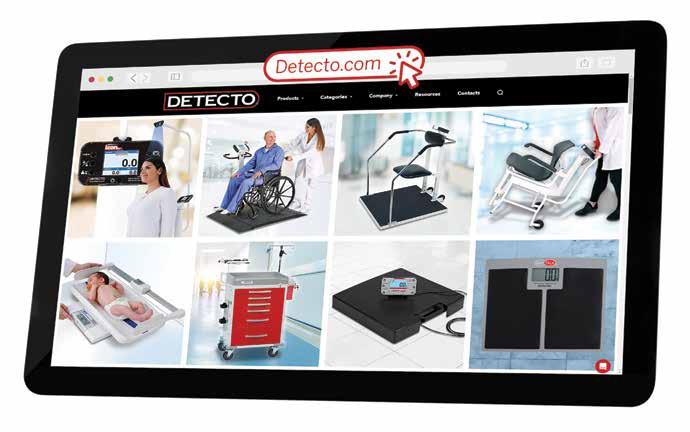
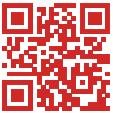
The Transformation of the Healthcare Supply Chain
BY ERIC SWAIM, VICE PRESIDENT OF STRATEGIC SOURCING AT HEALTHTRUST PERFORMANCE GROUPIn the last four years, the healthcare supply chain has undergone unprecedented change. Eric Swaim, Vice President of Strategic Sourcing at HealthTrust Performance Group, shares his thoughts on the transformation happening with supply chain.
Q: What is the current state of healthcare supply chain?
Swaim: The supply chain in healthcare is continuing a transformation that began with the pandemic. Backorder rates spiked to 40% at the height of COVID-19 from a standard of about 5% pre-pandemic. Now, they average 10-15%. This has caused us to shift our way of thinking about supply chain – from an expense to be managed with “just-in-time” fulfillment model, to viewing supply chain as a strategic resource that needs to be actively managed because of the impact to patient care. Most health systems and suppliers have, or are currently undertaking this transformation by leveraging technology. We have traditionally talked about supply chain resiliency without understanding what that means. The conversation has evolved to supply chain risk and performance management.
Q: How is HealthTrust impacting this transformation?
Swaim: HealthTrust thinks differently about supply chain resiliency. We believe it starts before a contract is even written with a supplier. Suppliers want to work with us because of our aligned scale. We evaluate their ability to meet performance
standards and what, if any, risks are present. We work with suppliers to build in obligations that protect our members’ ability to deliver care. Finally, HealthTrust incorporates AI into our proprietary monitoring model that works to standardize fill rate and other performance measurements that enables us to deliver operational recommendations when necessary.
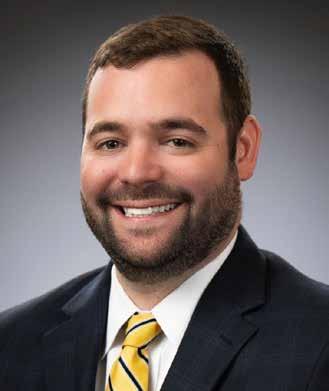 Eric Swaim, Vice President of Strategic Sourcing
Eric Swaim, Vice President of Strategic Sourcing
Q: What should be the role of Group Purchasing Organizations (GPOs) in the supply chain performance?
Swaim: GPOs should be doing much more than just contracting with suppliers in a category. Health systems should
expect their GPO to be coordinating the supply chain at a macro level. When disruptions do arise, GPOs should be providing recommended inventory levels, coordinating with distributors to ensure delivery and providing valuable information so that providers can make the most informed decisions to ensure continuity of care.
Q: How can leaders objectively gauge the performance of their supply chain?
Swaim: They should evaluate three key factors:
1. Operating Model: Is there a dedicated focus on supply chain resiliency that evaluates the performance of overall system, an ability to be resilient and manage risk?
2. Strategic Relationships: What protections and mitigations are in the contracts with suppliers, whether negotiated by the health system or the GPO? What economies of scale are being leveraging?
3. Use of technology and data: How is the portion of the supply chain that health system directly manages performing? What is the fill rate performance?
To learn more about the value HealthTrust provides its members and suppliers, please visit healthtrustpg.com
WHAT A DIFFERENCE OUR DIFFERENCE MAKES
HealthTrust Performance Group elevates supply chain resiliency by leveraging our operator experience, AI and an unparalleled knowledge of the global supply chain to ensure you can deliver optimal patient care. Its a difference only HealthTrust can make.
Dedicated to Making Missions Possible

Learn more!
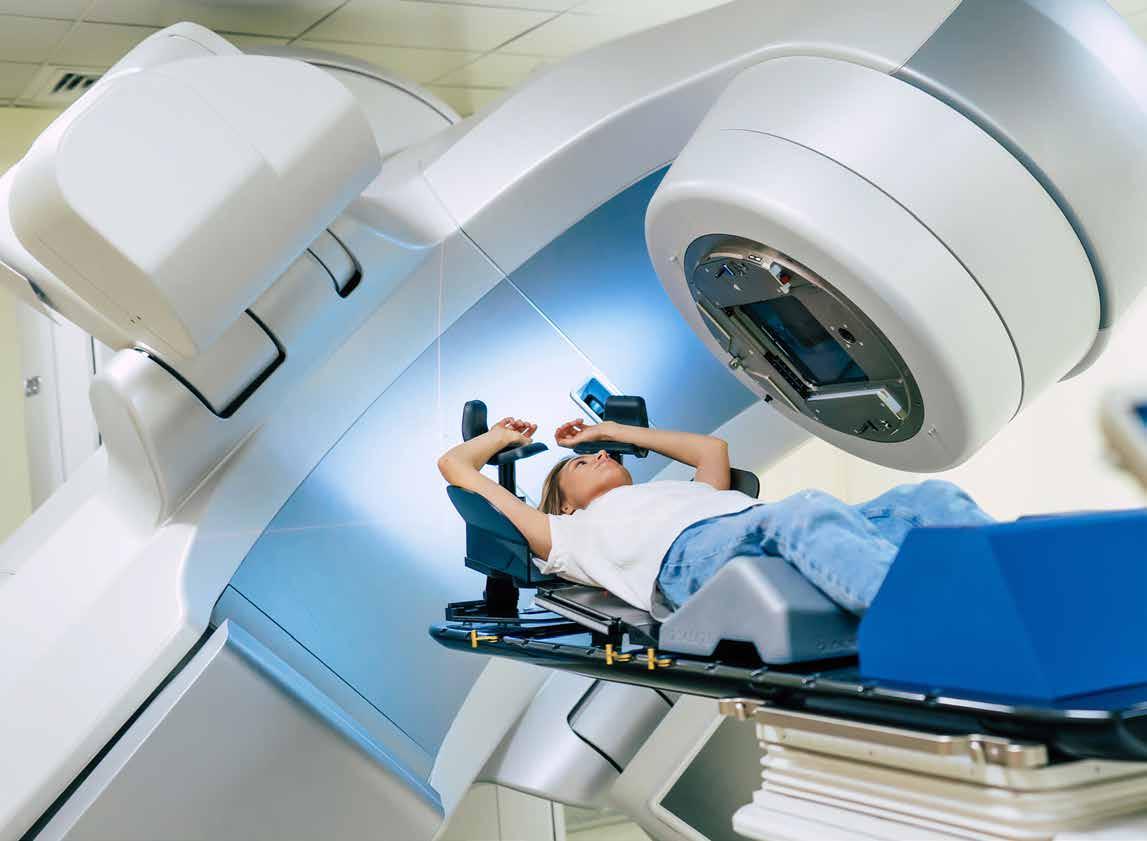
U.S. Cancer Statistics Released
Cancer rates are on the rise in younger adults.
Cancer mortality has continued to decline nationally. There have been 4 million fewer deaths related to cancer in the U.S. since 1991, according to the American Cancer Society’s (ACS) Cancer Statistics 2024 report. Factors that may be impacting the decline in mortality include fewer people smoking, earlier detection for some cancers, and improved treatment, according to the ACS.
The progress, however, has been compromised by an increased incidence of 6 of the top 10 most common cancers. The projected number of new cancer diagnoses for 2024 has topped two million for the first time ever, according to the ACS report.
Lack of cancer prevention tactics has resulted in higher rates of common cancers including breast, prostate, endometrial, colorectal, and cervical cancers, especially amongst younger adults.
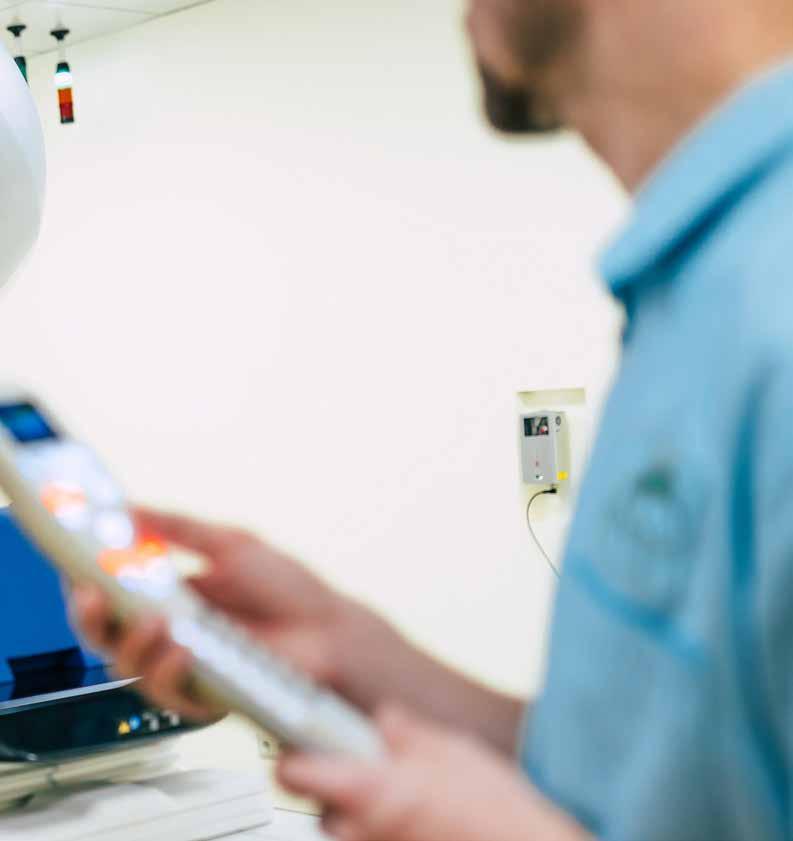
Cancer rates in younger adults
The sharp increase in cancer rates among younger Americans is concerning to physicians. Increased screening, awareness of non-invasive tests for colorectal cancer, and follow-up care is important, especially for individuals 45-49 years old. With colorectal cancer especially, according to the ACS, up to one-third of people diagnosed before age 50 have a family history or genetic predisposition for the disease. These individuals should begin screening for cancer before 45 years of age.
Colorectal cancer incidence has moved from being the fourth leading cause of death two decades ago, to now being the leading cause of death for men and the second leading
cause in women. Adults under 50 years of age have seen increased cancer mortality overall, with breast cancer leading among women under 50. There were more than 2,000 breast cancer deaths among women under 50 in 2021, according to the ACS.
Cancer patients are getting younger: the proportion of diagnoses in people who are 50-64 years old increased from 25% in 1995 to 30% in 2019-2020. According to the ACS, stressors on people younger than 65, such as lack of health insurance, managing families, and working full time may be a factor in increased cancer rates within younger age groups.
Cancer rate disparities
Mortality rates for certain cancers show wide static cancer disparities. According to the ACS report, compared to White people, mortality rates are two times higher for prostate, stomach, and uterine corpus cancers in Black people, and for liver, stomach, and kidney cancers in Native Americans.
Adults under 50 years of age have seen increased cancer mortality overall, with breast cancer leading among women under 50.
Steeper increases in women of color especially are widening racial disparities, with the death rate now two times higher in Black women (9.1 per 100,000) than in White women (4.6 per 100,000), according to the ACS.
The ACS 2024 report exemplifies a need for policy interventions that help reduce cancer disparities. According to the ACS, lawmakers should be urged to ensure that more people have health insurance coverage, improved access to care, greater affordability of healthcare services, increased cancer research funding, and improved screening programs.
Kaleida Health’s Journey to $75M in Savings and Health System Transformation
Alongside consolidation, consumerism and technology advances, Kaleida Health recognized the opportunity to unlock the value of the supply chain for cost savings, growth and high-quality patient care.
In five years, Kaleida Health recognized more than $75 million* in total savings – all while maintaining quality care and strong clinical outcomes.
Here we outline Kaleida Health’s core strategies in advancing cost, quality and outcomes (CQO) for a future of better, smarter healthcare.
Putting Value Analysis at the Center
A clinically integrated supply chain is a core operational mindset for Kaleida Health. Kaleida Health worked to align organizational goals with its value analysis process and deploy a systemwide, physician-led decision-making structure.
The organization leveraged Premier’s group purchasing organization to manage nonlabor spend and augment existing agreements through the value analysis lens, alongside a dedicated team and actionable data to identify products and services that support CQO improvement.
Integrated, real-time clinical, supply and operational data gave the organization a leg up in achieving systemwide standardization, savings and price parity, with more than $17.7 million* in savings recognized from the value analysis process in 2022.
Value analysis is also at the center of Kaleida Health’s quality initiatives this year, including efforts to reduce CLABSI and CAUTI rates, implementation of a unique enteral feeding connector, and more.
Tackling Purchased Services
For improvement efforts, providers need to tackle areas that historically have been difficult to manage, such as purchased services.
Kaleida Health recognized this imperative and turned to Premier’s purchased services arm to reference services pricing, develop processes to centralize this purchasing and avoid waste, and aggregate spend for best price contract negotiations.
The organization’s optimization of purchased services contract categories drove $1.1 million* in savings in 2023, and 15 initiatives have been identified for 2024, representing a spend of $64 million.
A comprehensive technology platform is also helping Kaleida Health save money and time – surfacing analytics, benchmarks and actionable insights to source competitive contracts and easily measure purchased services usage and spend.
Advancing Clinical Care
With two long-term care facilities, outpatient clinics and home healthcare, Kaleida Health is addressing shifts in site of care through an integrated ambulatory care and physician enterprise strategy – aligning relationships with local providers and expanding its focus on population health. The team will continue efforts to establish clinician standards across the ambulatory enterprise – underpinned by transparent data sharing – to increase efficiency, reduce variation and drive revenue enhancement.
Kaleida Health is also driving quality and safety advancements to enable a systemwide framework for clinical decisions and standardization. The team will look at measuring and analyzing risk-adjusted clinical outcomes, cost, resource utilization and efficiency, and is working towards integrated data sets to help understand cost per case and other drivers to create new value streams.
Based on the transformation work to date, Kaleida Health is well poised for future success – comprehensively tackling CQO improvement that is generating positive results for the supply chain, organization, and communities and patients it serves.
Contact Premier to explore transformational objectives for your organization.
Redefine your contract processes with Contract Explorer, Conductiv’s AI contract analysis platform.
Try it out: Upload, gain summaries, and explore insights on your first 25 files for free!
Built with the purpose of empowering Supply Chain Professionals, Contract Explorer offers a revolutionary approach to contract analysis, search, summarization, and strategic evaluation.
Designed to simplify purchased services contract management. Transform lengthy legal documents into concise, easy-to-understand summaries, all checked for quality by our team of sourcing experts.

Upload your first 25 files for free!
By the Numbers: Colorectal Cancer
65.0%
Individuals with a family history of colon cancer or inflammatory bowel disease, and those who have had cancer before should test for colorectal cancer annually. The risk for developing colon cancer is much higher for at risk groups, according to the CDC.
According to the National Cancer Institute, there is an estimated 5-year survival rate of 65 percent for individuals diagnosed with colorectal cancer. If you fall into a category with higher risk, test early and often to ensure you are healthy and cancer-free.
4th
Colorectal cancer is the fourth most common cancer among men and women, and the fourth leading cause of cancerrelated death in the U.S., according to the Centers for Disease Control (CDC). The rate of new cases of colorectal cancer nationally is 36.6 per 100,000 men and women, per year, according to the National Cancer Institute.
4.1%
Colorectal cancer, or colon cancer for short, is a disease in which cells in the rectum grow out of control. The colon is the large intestine, and the rectum is the passageway that connects the colon to the anus. Abnormal growths called polyps can form in the colon or rectum, and over time, some polyps may turn cancerous. Approximately 4.1 percent of men and women will be diagnosed with colorectal cancer at some point during their lifetime, according to 2017-2019 data from the National Cancer Institute. Screening tests help to find colorectal cancer in its early stages, when treatment works best.
153,020
In 2023, colorectal cancer had an estimated 153,020 new cases throughout the United States, according to the National Cancer Institute. In 2020, the National Cancer Institute estimated that nearly 1,388,422 people were currently living with colorectal cancer in the United States.
38.4%
The pandemic greatly impacted cancer screening, as many people delayed or stopped testing altogether. According to the National Institutes of Health (NIH), from March 2019 to March 2020, there was a 38.4% decrease in colorectal cancer screening. March is Colorectal Cancer Awareness Month, recognizing the importance of getting colorectal cancer screening back on track and increasing early disease diagnosis.
18,000
Colorectal cancer rates are increasing nationally, especially among younger adults, according to the National Institutes of Health and the American Cancer Society. Nearly 18,000 people under 50 were estimated to have been diagnosed with colorectal cancer in the U.S. in 2020. Factors that impact the risk of developing colorectal cancer include obesity, inactivity, and smoking.
45
A colonoscopy is the primary test for identifying colorectal cancer, and it is recommended for all individuals aged 45 and older, according to The American Cancer Society. The test looks for signs of cancer in an individual’s stool to determine abnormalities. Signs and symptoms of colon cancer, according to Mayo Clinic, include a change in bowel habits, stomach discomfort, bleeding, weakness, and weight loss.
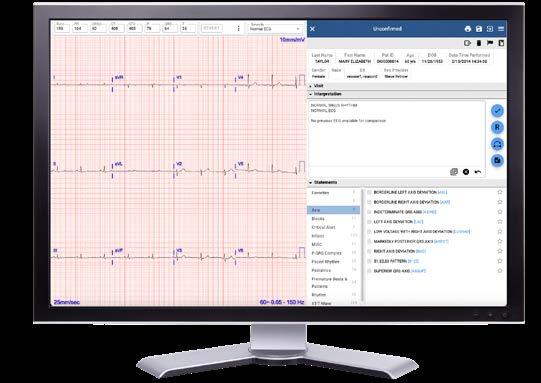

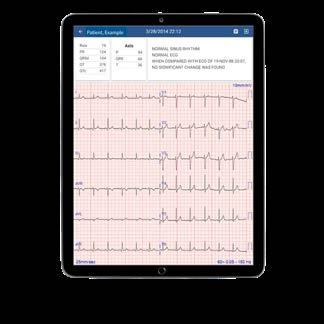
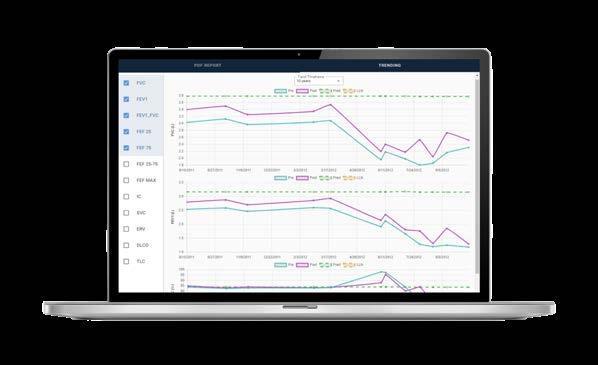
ONE SOURCE OF TRUTH FOR CONNECTIVITY
As health systems continue to grow and expand, data shows they may be using up to 5 different cardiology management systems just within the hospital network itself.1
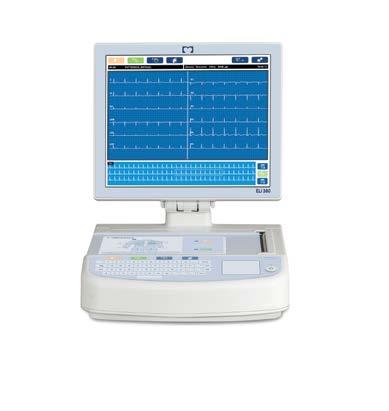



Help eliminate redundancies across the health system. With Cardio Server, leverage one system to manage patient data from 25+ different modalities, including ECG, Stress, PFT and Holter for care teams to access, with results available immediately in the EMR. Limit the number of systems a clinician needs to open to get a patient’s full cardiology history. Let Cardio Server be your one source of truth.


Forming Partnerships and Driving Value
Supply chain leaders discuss keys to successful industry partnerships, challenges in 2024 and beyond.
BY PETE MERCERThe beauty and challenge of the healthcare supply industry is that it’s built almost entirely off of relationships. The upside to this is that by building these relationships between suppliers, manufacturers, distributors, and IDNs, you can partner together to facilitate better business arrangements and, most importantly, create better outcomes for patients. The challenge is that it can be hard to build these relationships without an “in”, especially when you’re trying to connect with IDNs.


































































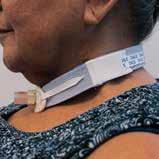













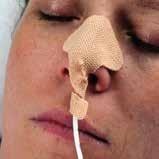
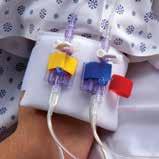
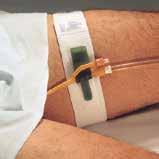









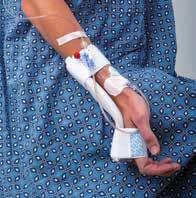













Last fall, The Journal of Healthcare Contracting hosted IDN Insights West in Marina Del Rey, California, highlighting some of the most progressive, largest healthcare systems in the West region of the United State. Sponsored by Allergan Aesthetics, speakers at this event covered how large health systems measure successful contracts, the challenges these health systems are dealing with, what successful supplier/provider relationships look like, and how to best partner with a GPO. These are some of the highlights from the sessions at IDN Insights West.
and group customers based on similar attributes. From there, you can develop segment-specific messaging and value propositions for your solutions that will be tailored to what those customer segments are looking for. It’s important to remember that segmentation shouldn’t be based on sales or the total patient size – segmentation should only be informed by really specific parameters related to the business of your customers.
Uman said, “Segmentation really helps you answer three broad questions. One is, which customers should I be going after?
Efficiency is such an important component of healthcare, and anyone who can provide tools and resources that make a hospital more efficient is a valuable partner.
Driving value
In the United States, there are approximately 1,100 Integrated Delivery Networks (IDNs), 6,100 hospitals, 8,500 ambulatory surgery centers, 15,000 skilled nursing facilities, 123,000 physician groups and 1,000,000 physicians. How can you make it so that your value proposition captures the attention of just a fraction of these entities? It’s all about driving value.
Igor Uman, Associate Principal, Sg2, Consulting, Vizient, held a workshop where he walked all the attendees through the value of segmenting and prioritizing your distinct customer base. Additionally, the Vizient team walked through various demonstrations for how you can better deliver value propositions and manage these relationships.
Segmentation is a critical component to driving value within your distinct customer base by helping you to prioritize
The second question is for customers that I should be going after, how do I group those customers into common attributes that tells me something about how they prioritize, how they make purchasing decisions or some sort of key insight that can help orient your value proposition around? And it’s really the third question that segmentation helps answer. What value proposition should I be delivering to those unique segments? And within those segments, how might that value proposition change depending on who I’m talking to?”
This is an incredibly useful and viable way to drive value for your customers and the industry at large. You cannot drive value without providing value, which is where the value analysis team comes in. With value analysis, hospitals are working to better understand the value of each product that is purchased
to ensure that money is wisely spent across the organization.
During the presentation, the Vizient team took the time to review some mission statements of popular IDNs in an effort to get to the heart of what these networks are really looking for. Common responses include “Improve human welfare, advance the world of health, shaping healthcare, profoundly shaping the trajectory of health for humanity, driven by passion to help patients, making better health possible for people around the world, uniting to save and sustain lives.”
What’s the common denominator in all those mission statements? A patient. At the end of one of your devices is a patient. Think about that the next time that you’re having a conversation with somebody in an organization. The end of every device is a patient, and that’s why you want to become a healthcare company.
Putting COVID in the rearview mirror
Even though we are almost four years removed from the onset of the COVID-19 pandemic, the ripple effects and ramifications are still being felt in the healthcare industry today. Staffing shortages and burnout are only some of the effects still felt by the human resource of the healthcare supply chain – but what other ways are organizations still grappling with the effects of the pandemic?
Issam Abouzahr, Sr. Director, Supply Chain Optimization at HealthTrust Performance Group, said, “This is just the new normal now. We’re dealing with labor shortages, raw material shortages, labor cost increases, volumes have changed significantly. We’ve seen
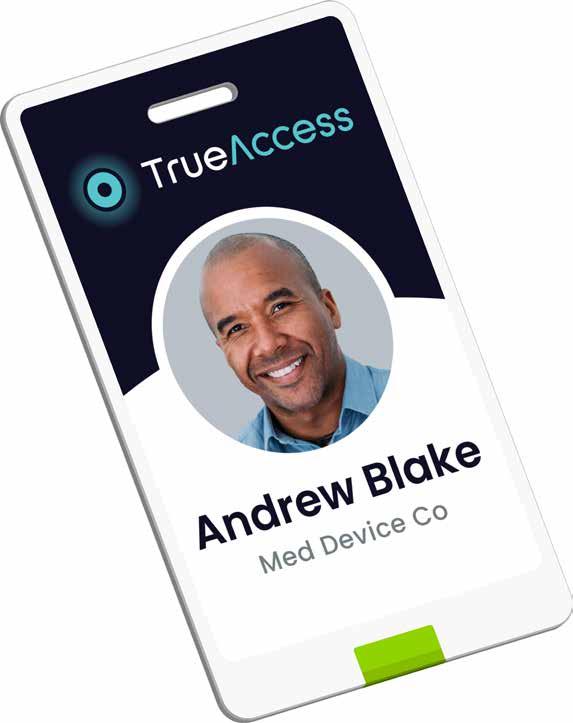



a big shift towards outpatient volumes. We try to make sure that our folks in the hospitals and that our members understand that too. It’s always a two-way street between the vendor relations and the hospitals. I think everybody’s feeling the pain from this and we’re trying to get creative about how we can support costs.”
One of the opportunities that an event like the pandemic has afforded IDNs is the potential to renegotiate contracts. Nestor Jarquin, Supply Chain Services, Strategic Sourcing, Manager Surgical at Kaiser Permanente said, “We’re saying that pandemic events are no longer an act of God. It’s going to happen. Here’s what you need to do in terms of pandemic events. So again, learnings from the supply chain and how we are adjusting and how we see the supply chain with the market today.”
Part of the challenge of being in the post-COVID era is that it can still be hard to plan ahead and move forward with all of the chaos that the world just endured. For Cecile Hozouri, VP of Supply Chain
at Scripps Health, 2023 was all about cleaning up from the pandemic. She said, “This coming year we need to reimagine; we need to get back on our innovation track. We need to get our suppliers in and start talking about different ways in which to partner. Because we haven’t been able to have those conversations strategically these past few years due to our teams efforts were focused on supporting patient care during a global pandemic. Now that we’ve been able to clear up the supply disruptions, we can focus on our cost reduction and reimagine initiatives with our partners.”
Developing partnerships
The most important skill for success in healthcare is your ability to build relationships and develop partnerships. The challenge with building relationships in the healthcare industry is access to the right people. Several of the sessions at IDN West 2023 were all about what those IDNs are looking for in their partnerships

and how vendors and distributors can successfully approach and build relationships with these networks.
Transparency and honesty are a key part of the equation, especially for organizations like Kaiser Permanente. Jarquin said, “When you’re working with Kaiser Permanente and you have a contract with us and you have a supply chain back order, we’re going to ask you for transparency. There’s reciprocity there in making sure that you’re honoring your commitment and sending products.”
Others are looking at what can be added and drive value for the whole system. Efficiency is such an important component of healthcare, and anyone who can provide tools and resources that make a hospital more efficient is a valuable partner. Hozouri said, “We’re looking at what it is that’s going to drive us better. It is not about the lowest cost. It really means that we need to be looking at making ourselves more efficient. It might not be about cost. Believe me, we add a lot of new cost to the organization, but I’m not interested in adding more stuff.”
Finally, many IDNs are looking for an organization that they can build a genuine partnership with – an organization where the number one priority matches up with the IDN. At the end of the day, it’s all about patient care. Abouzahr said, “For our public and private partnerships – as we look at self-distribution, as we look at working with our local and government entities, it’s no longer just a siloed operation. We all must work together. We’ve seen a lot of mergers and acquisitions across the industry, both within the hospitals, regional GPOs, consulting services, all those things partnering to try and make the best ultimate solution to support patient care.”

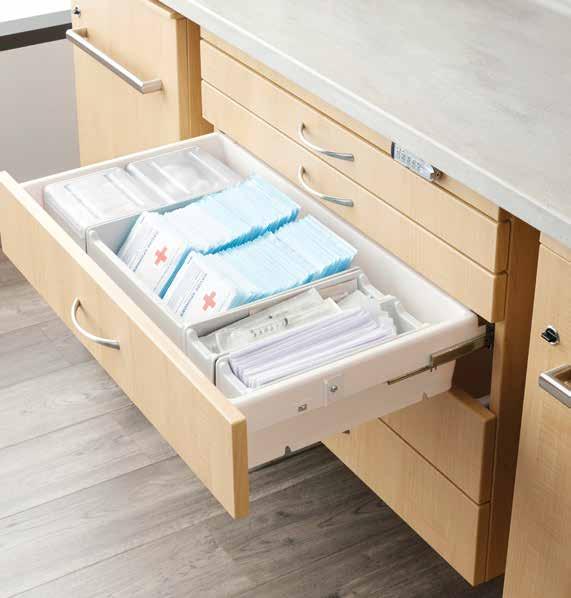
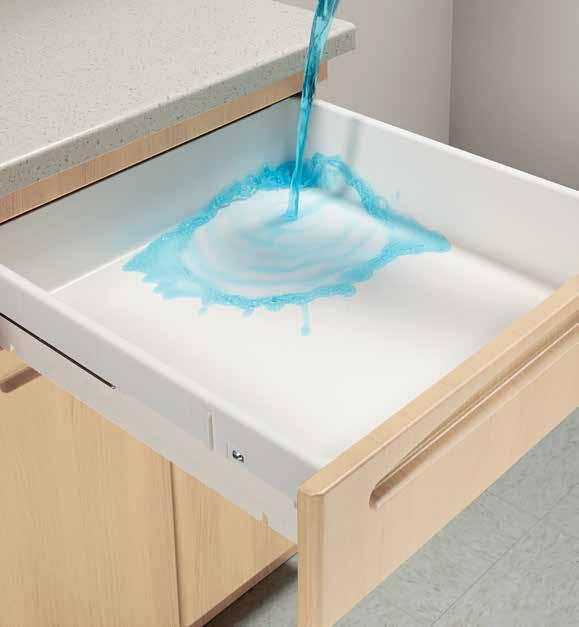
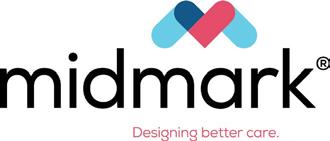
Choosing Cabinetry that Brings Value
Cabinetry design can determine the value and benefit it brings to the clinical environment. Medical-grade cabinetry can have a significant impact on efficiency, safety and the healthcare experience. While lower cost alternatives may seem like a good option, there can be additional associated costs. Involving us earlier in the project can take the pressure off you and help ensure the cabinetry you choose provides lasting value while minimizing additional expenses.
See why lower cost isn’t always best at: midmark.com/choosevalue
Scan to learn more.


Transforming Healthcare, Together.
From supply chain resiliency to clinical decision support to overall performance improvement, Premier delivers the solutions, data and expertise necessary for healthcare providers to thrive today and for the future. Together with our members, we’re enabling more innovative, effective and affordable systems of care.
We’re on a mission to build healthier communities. Join us.
